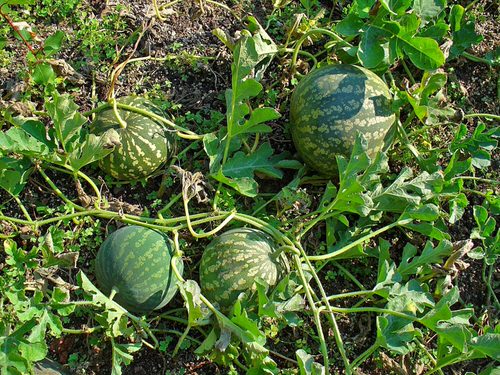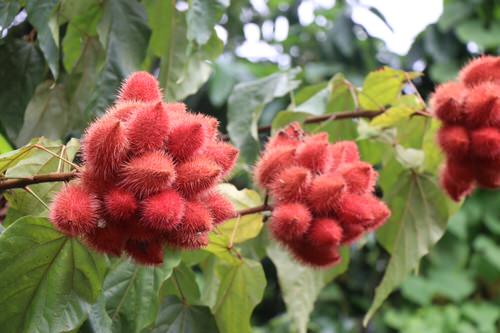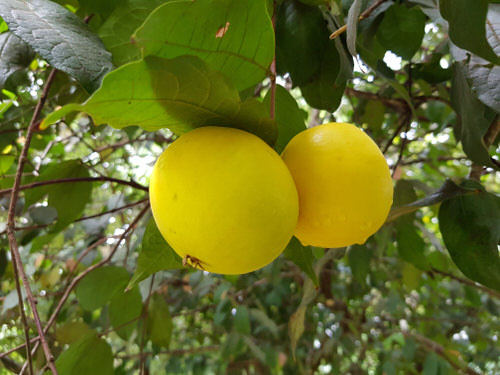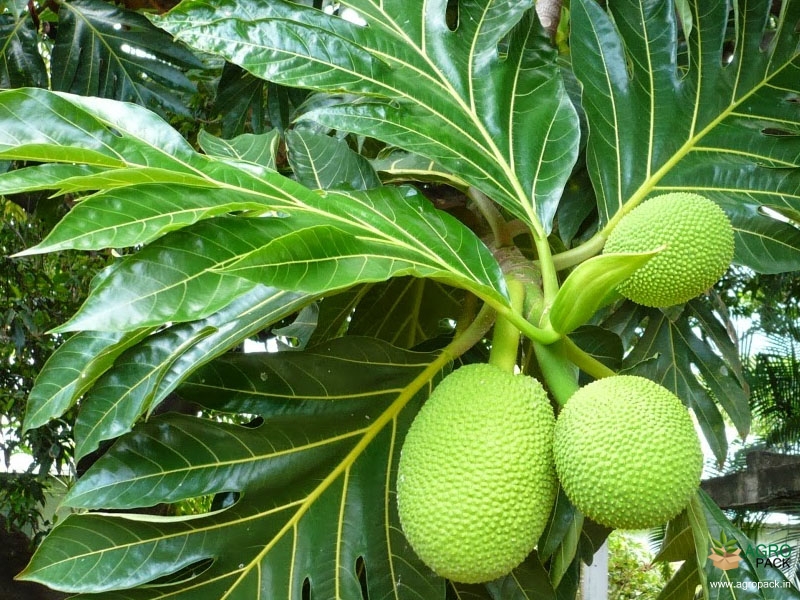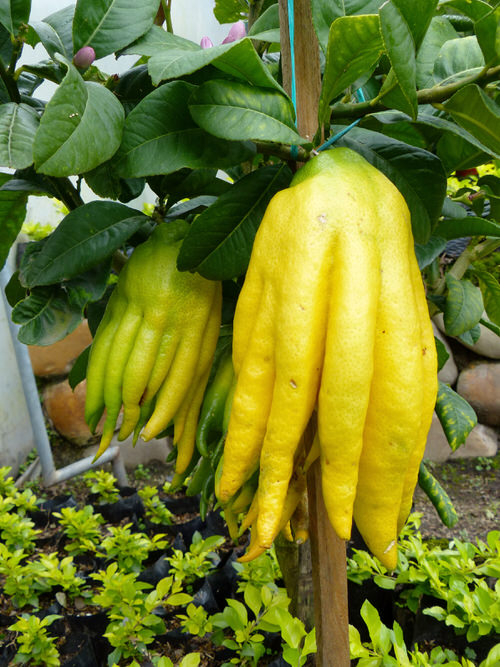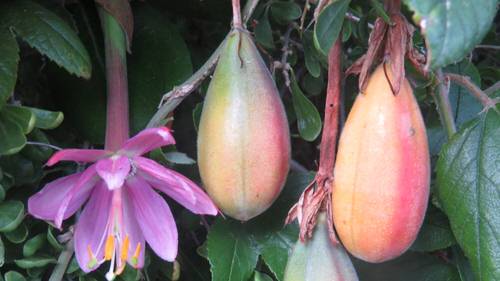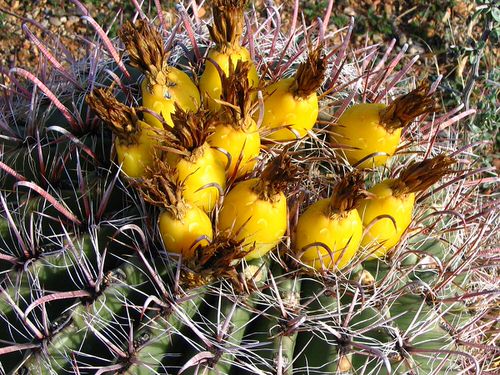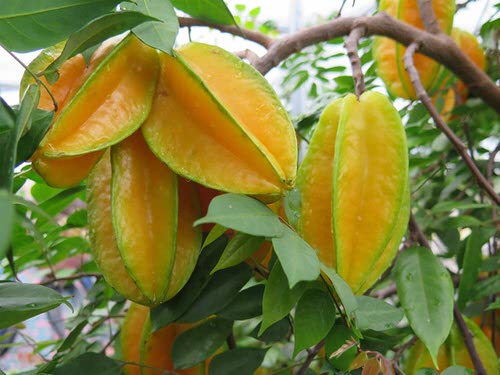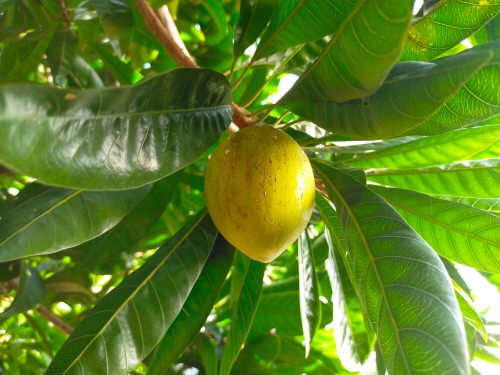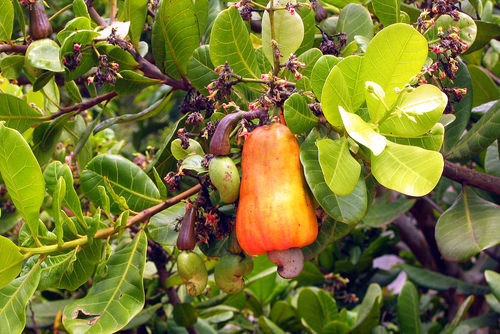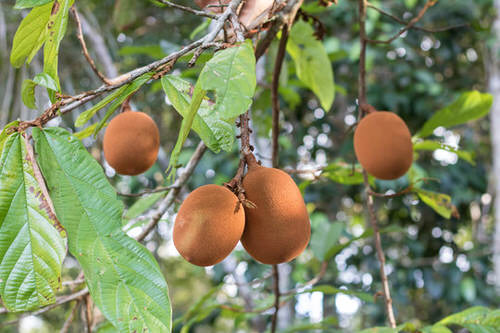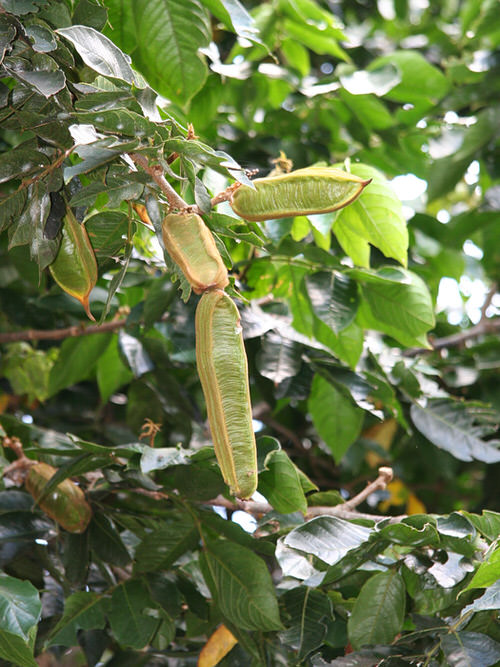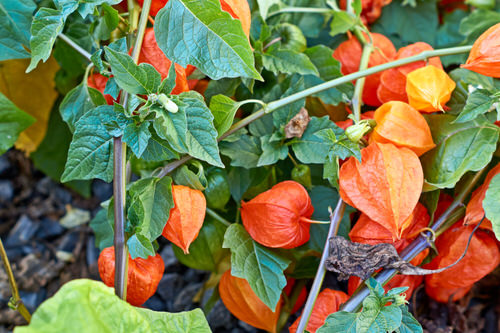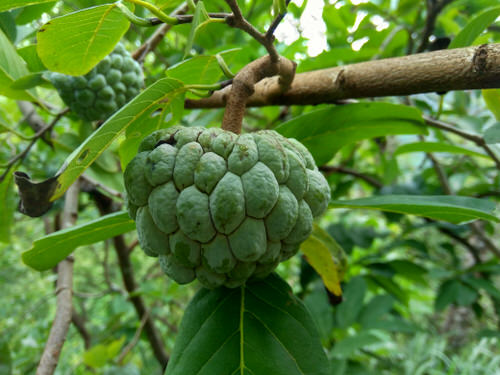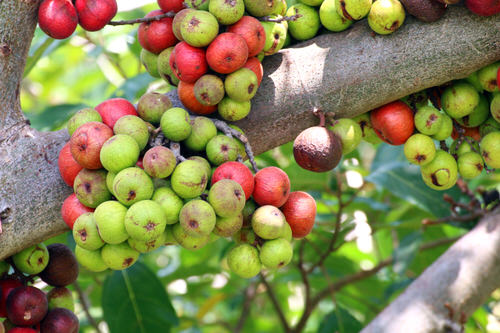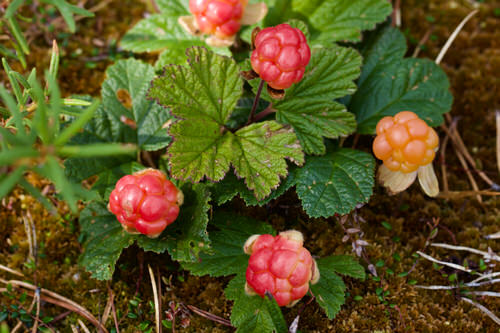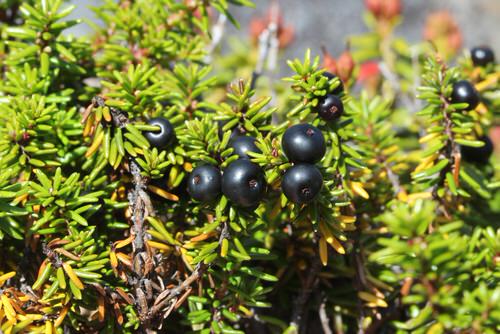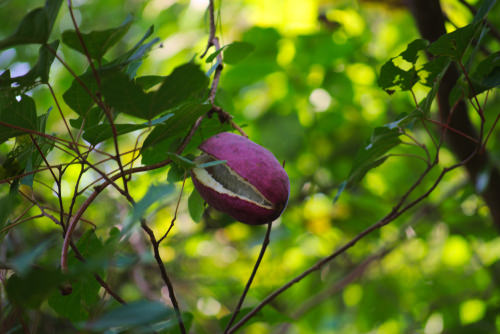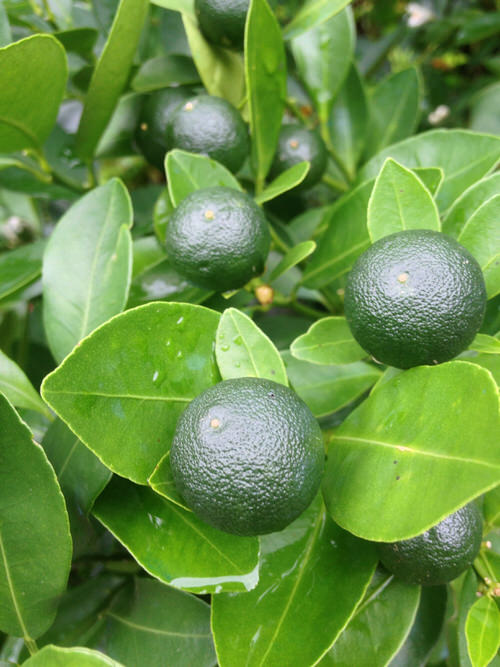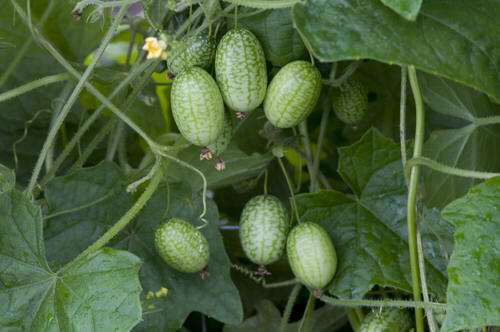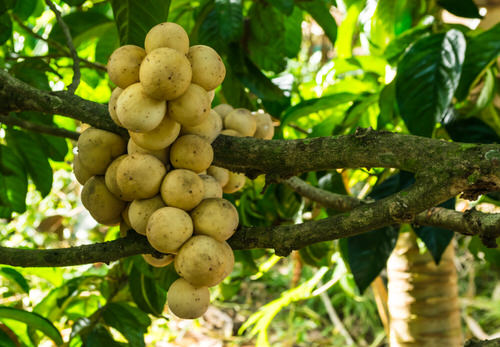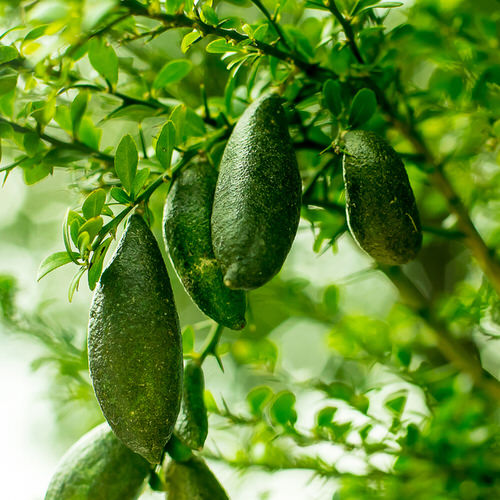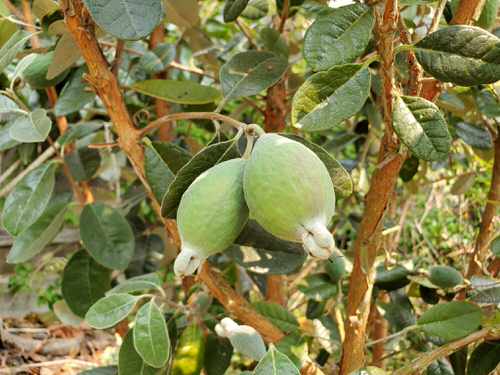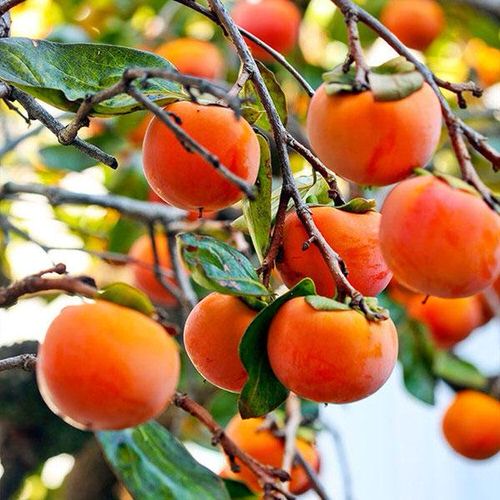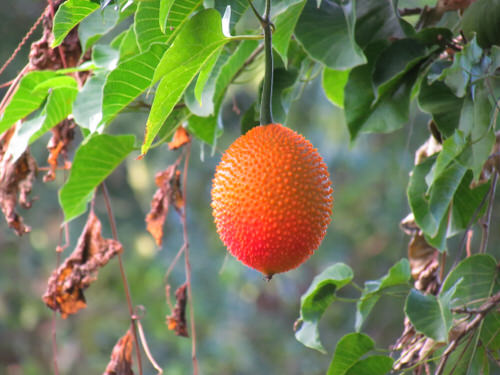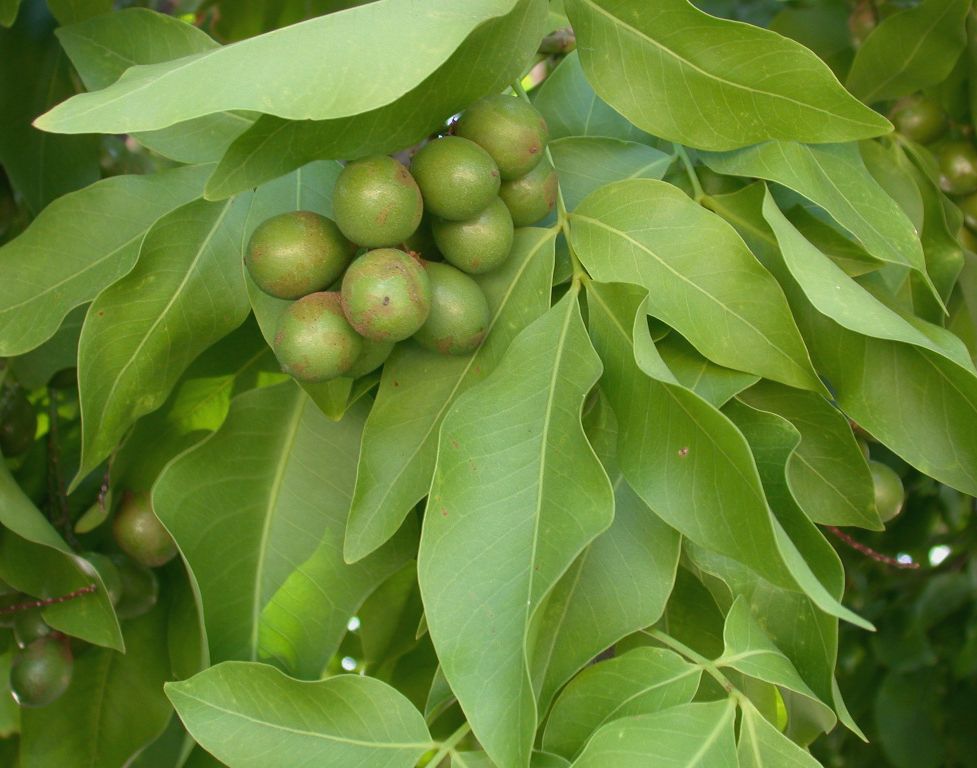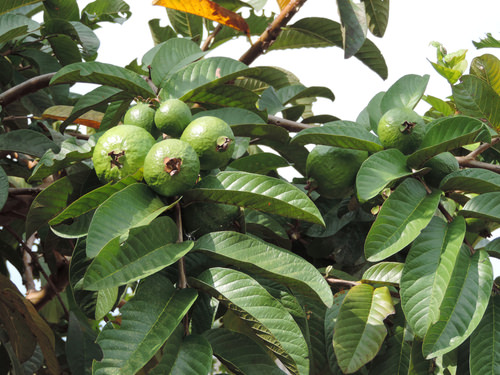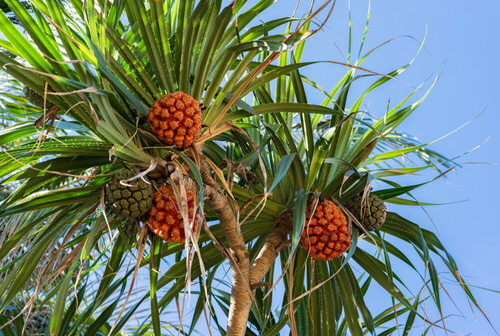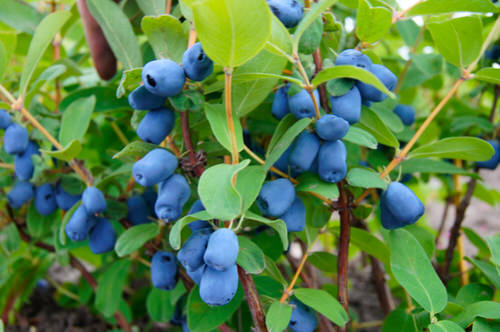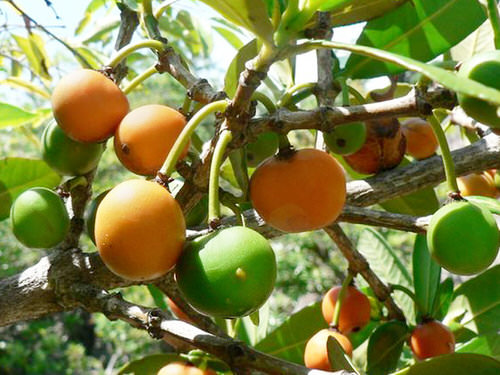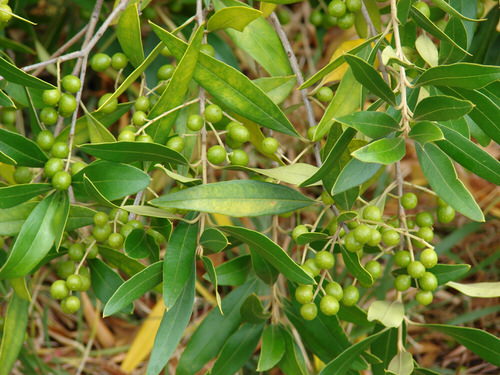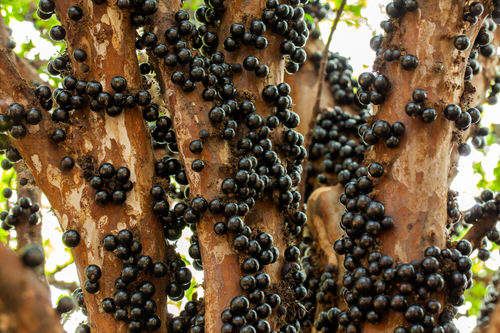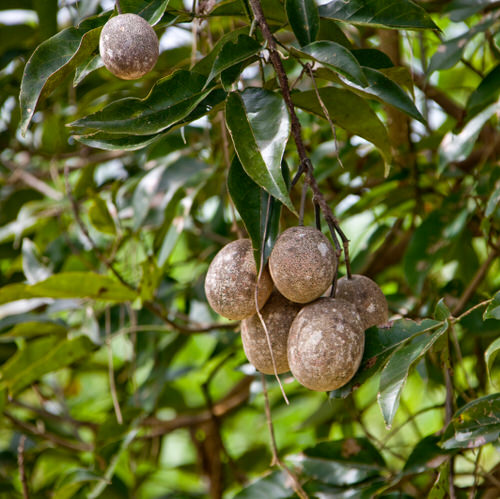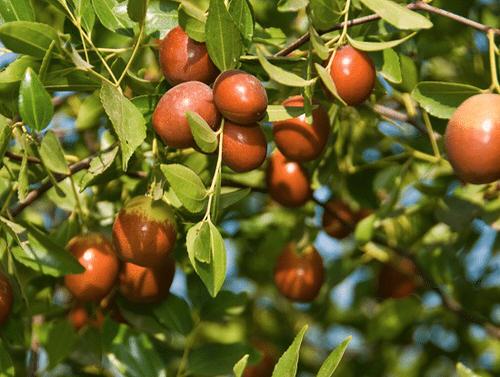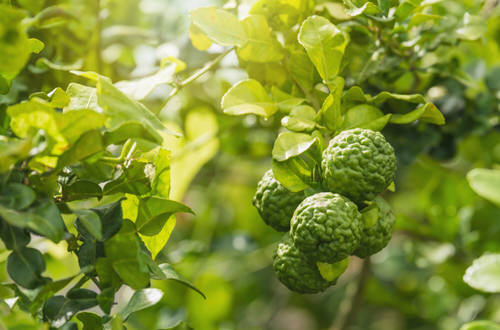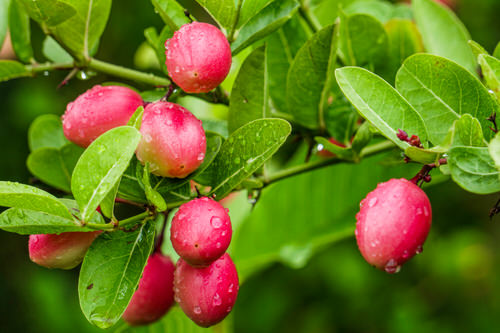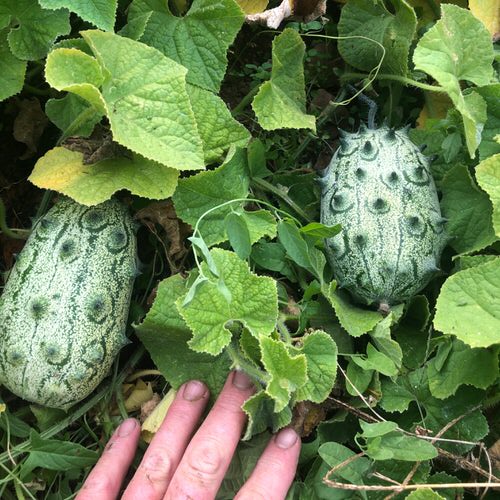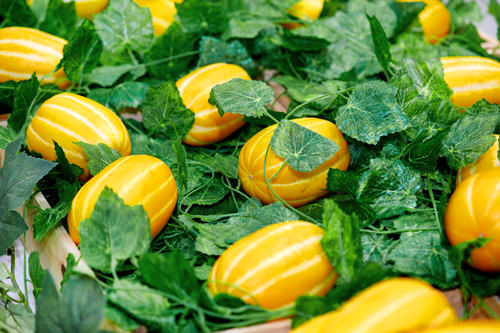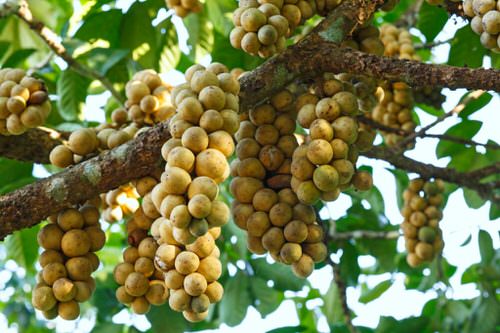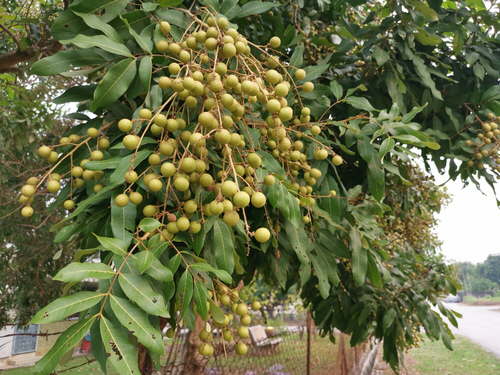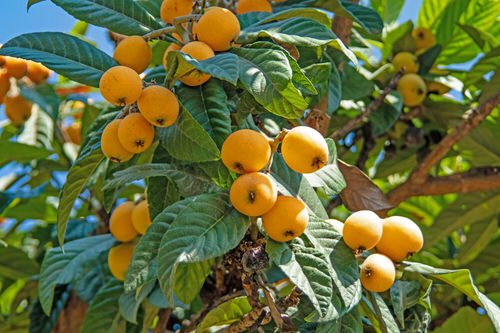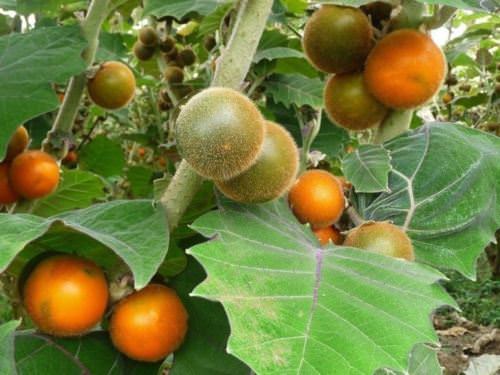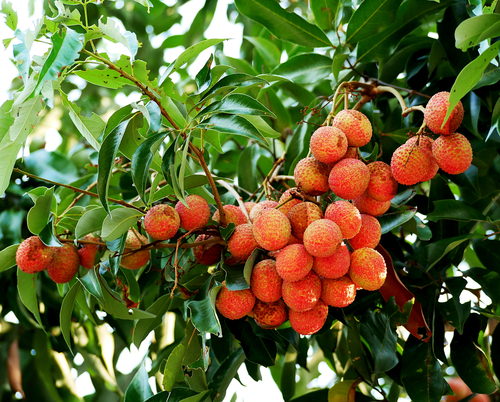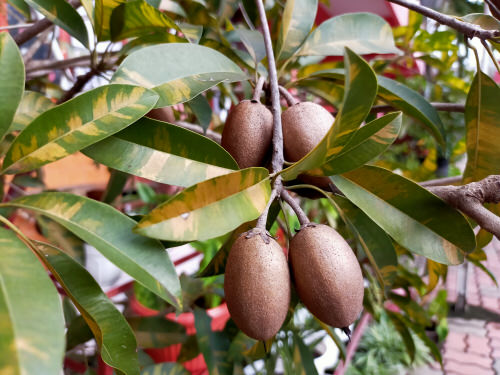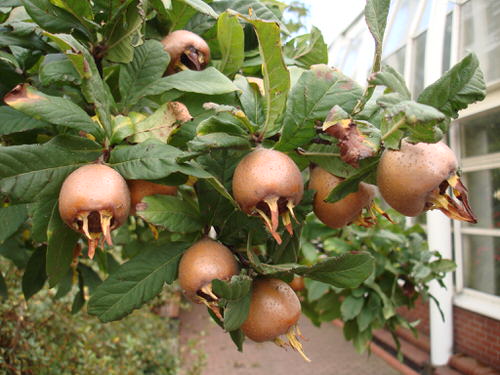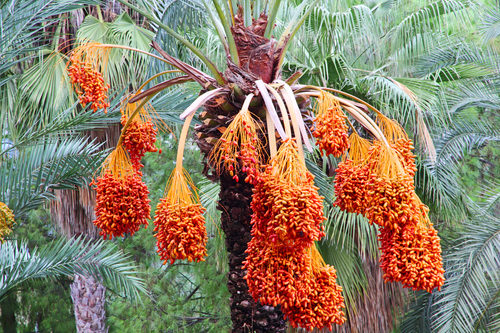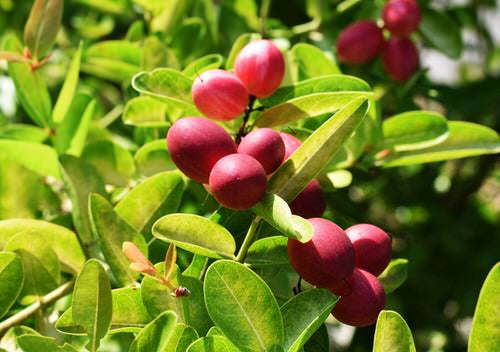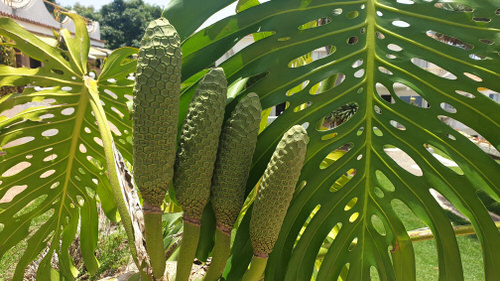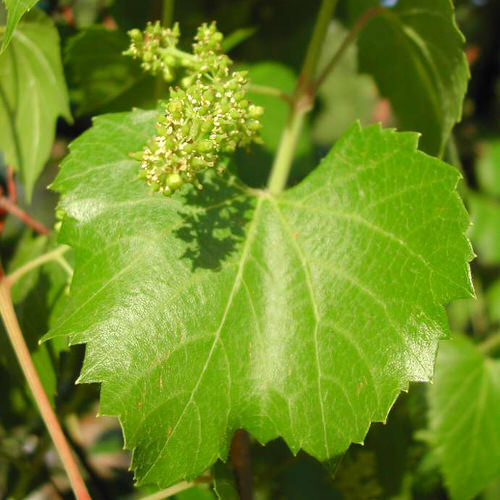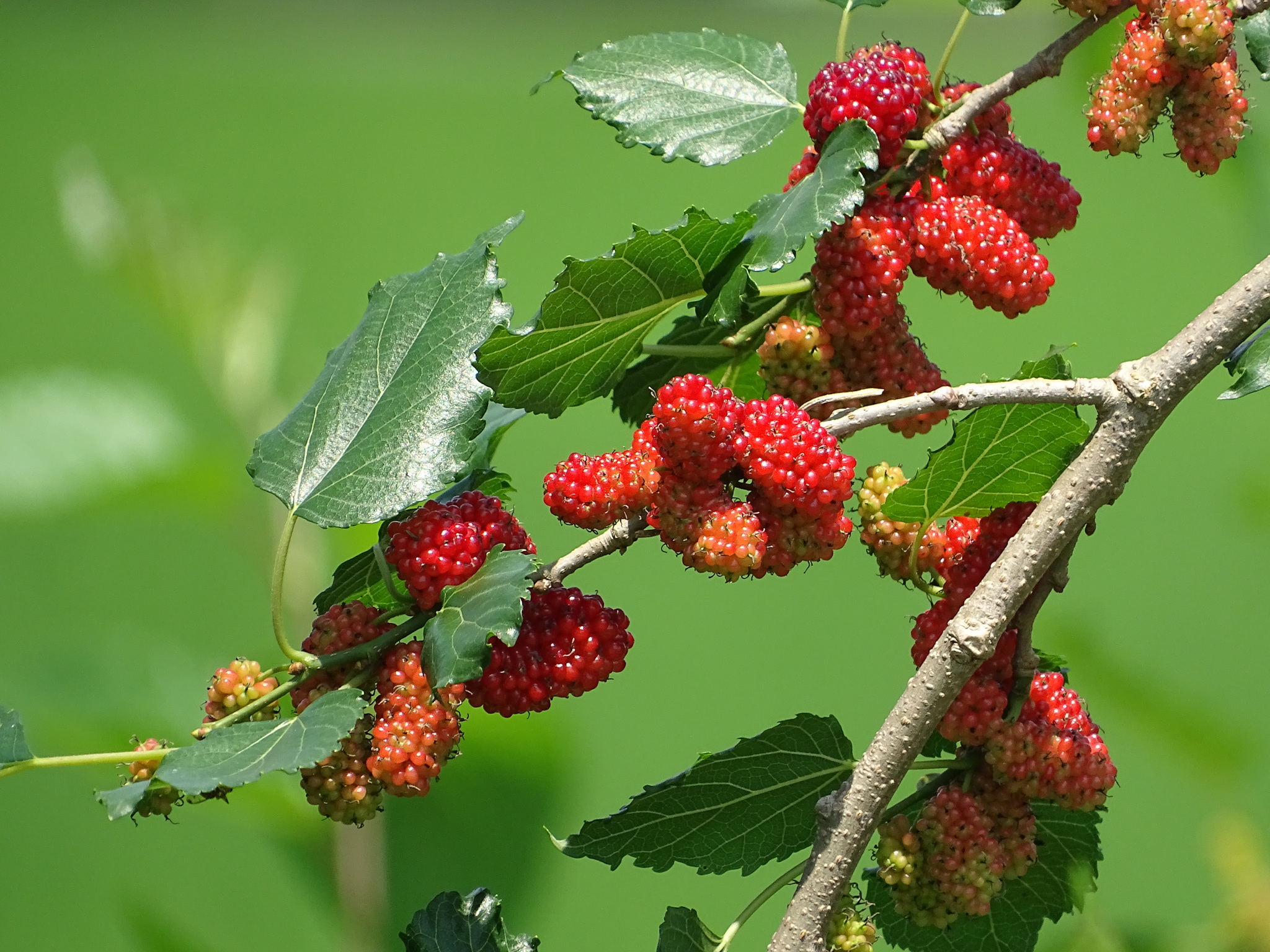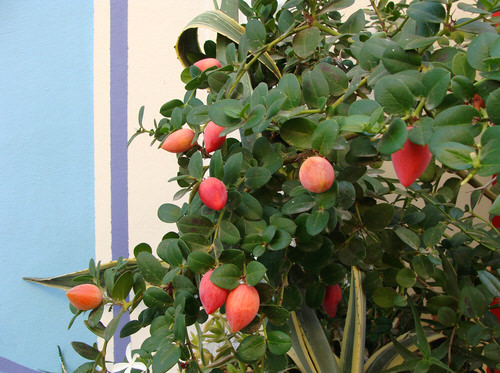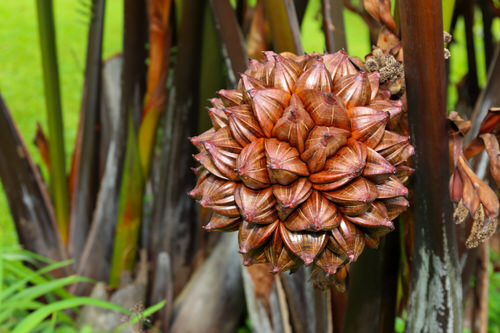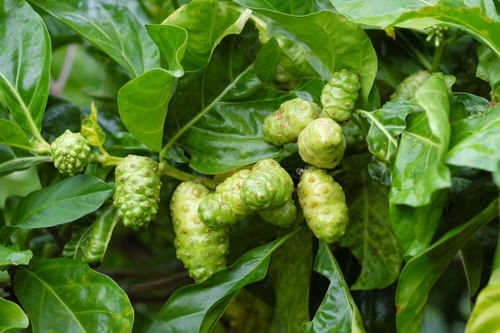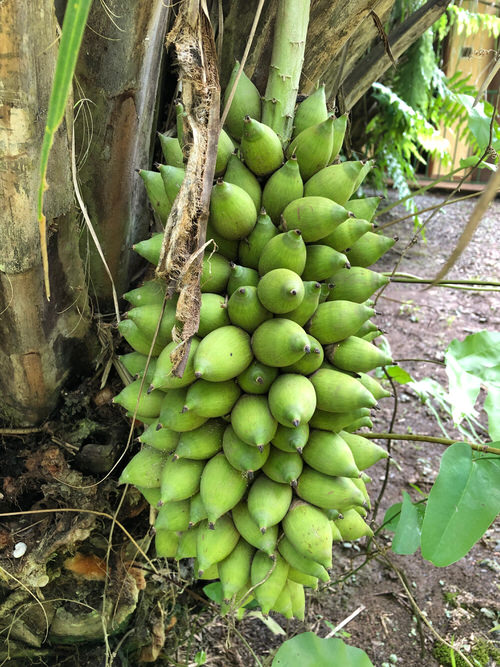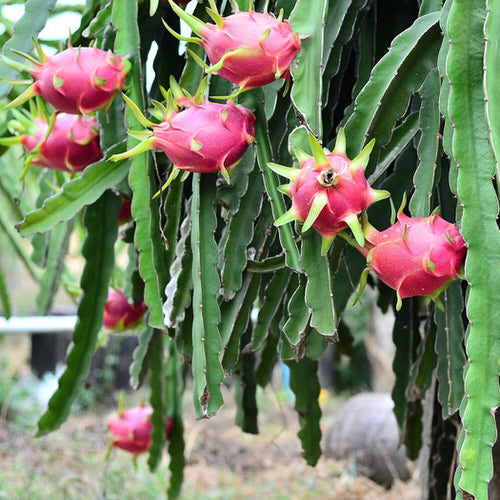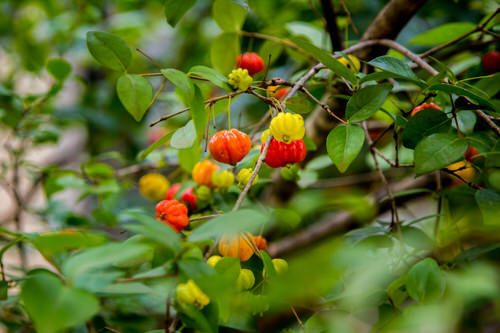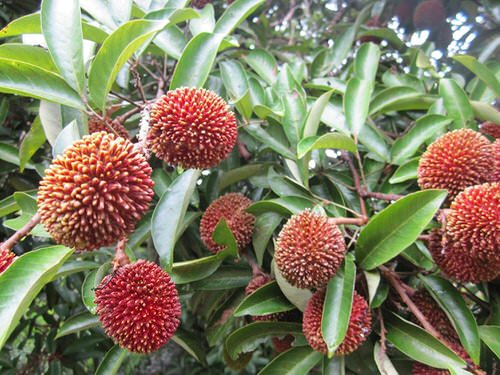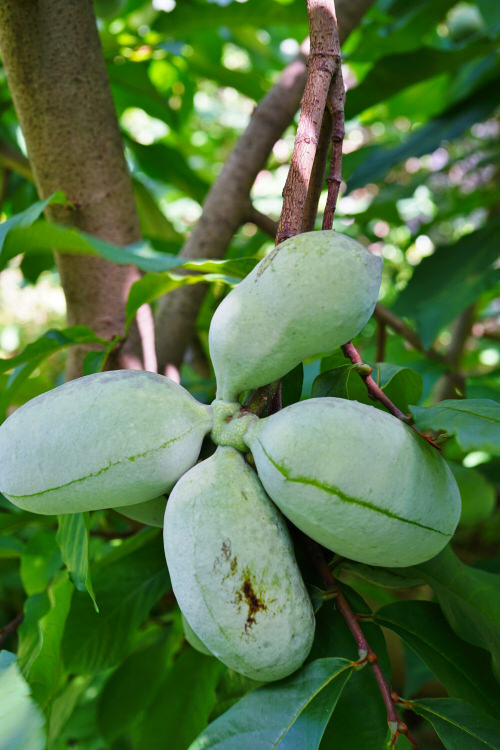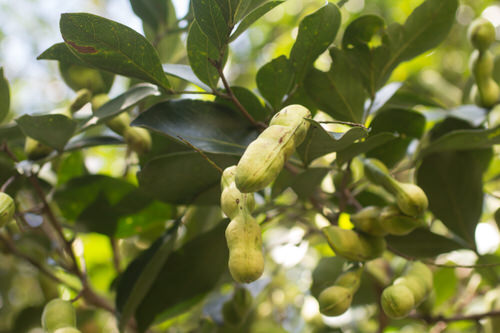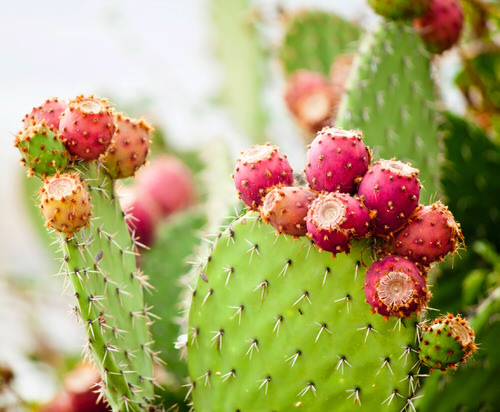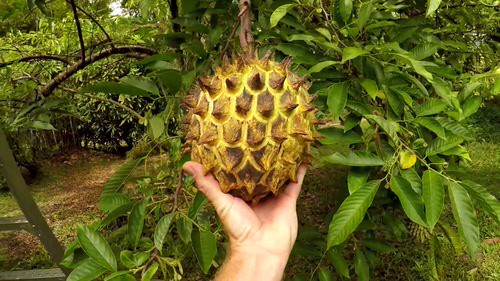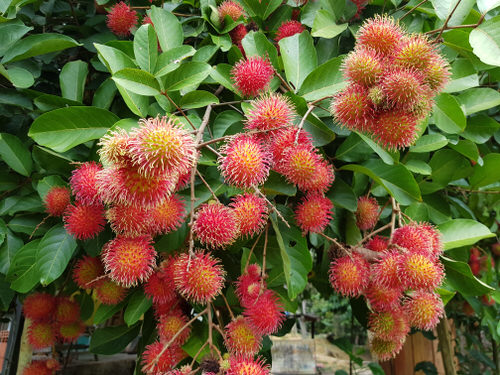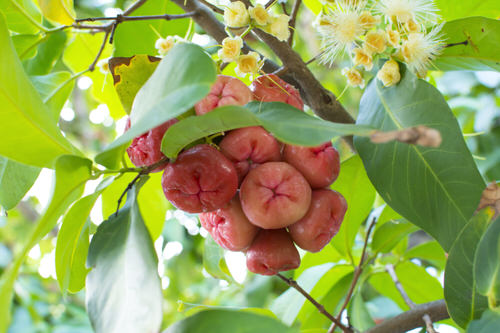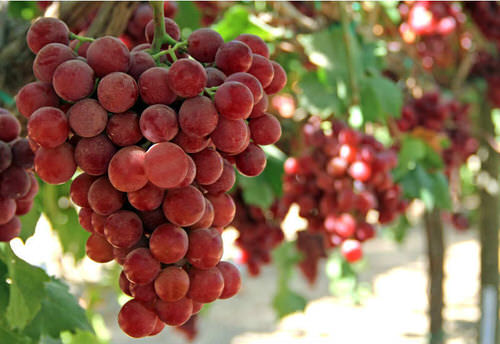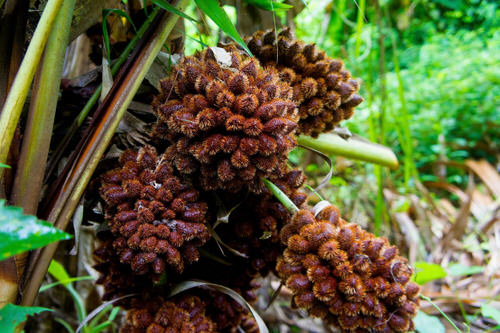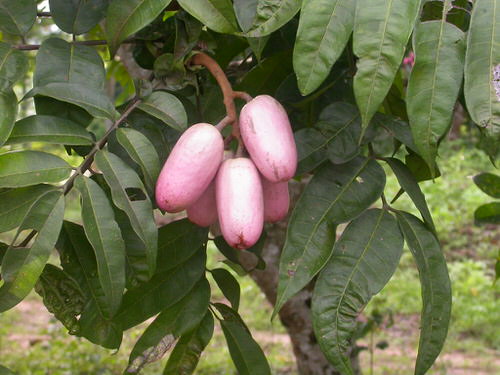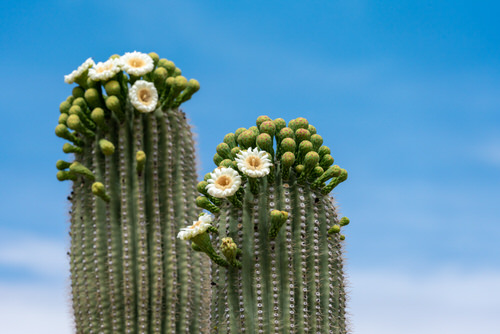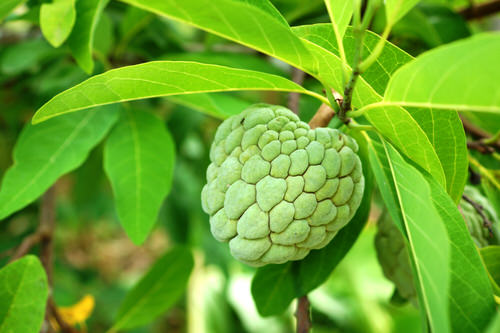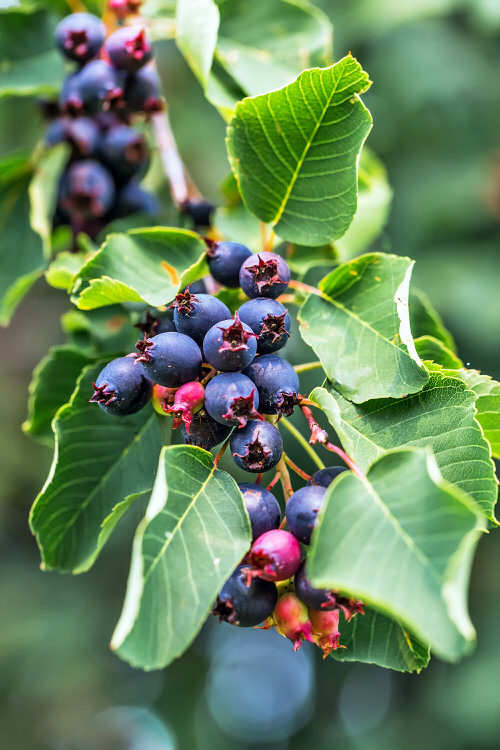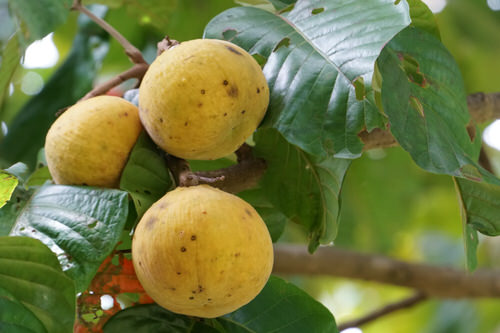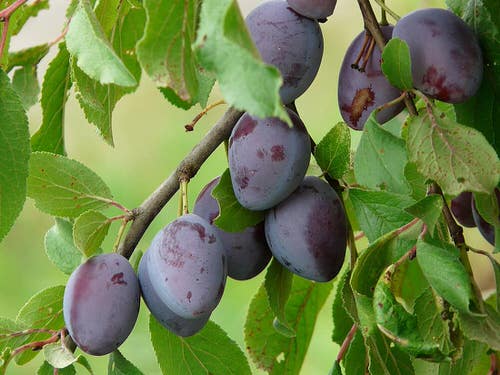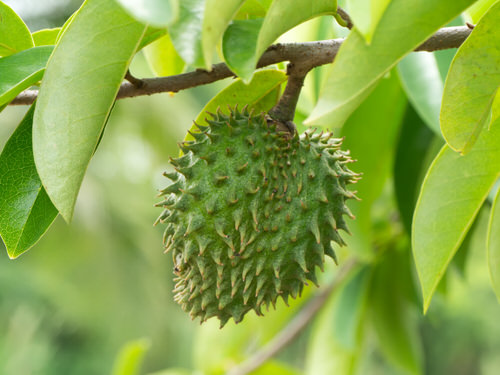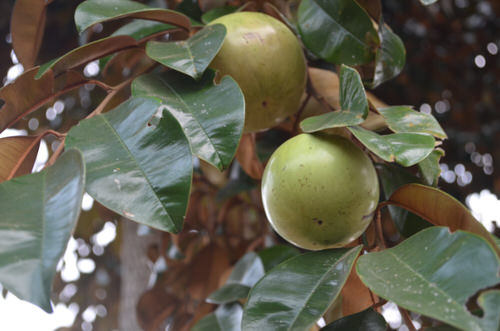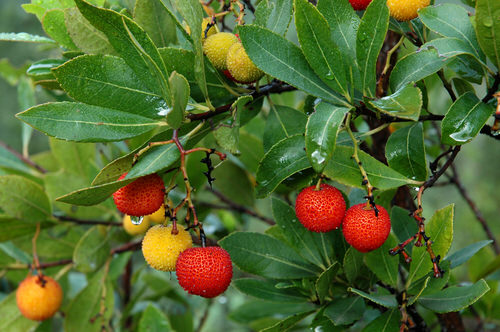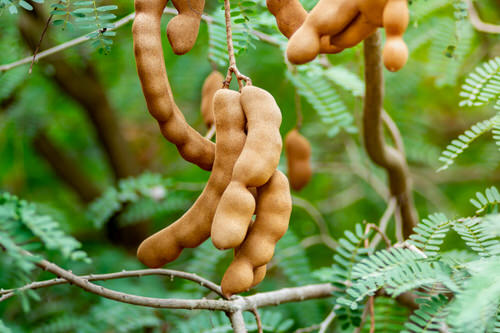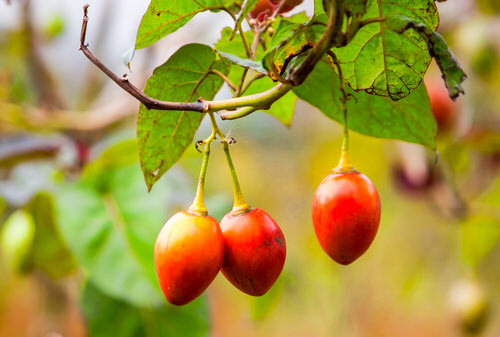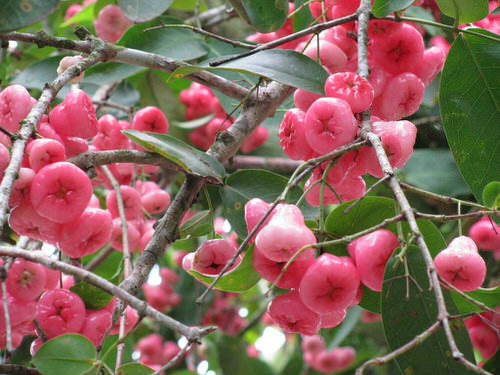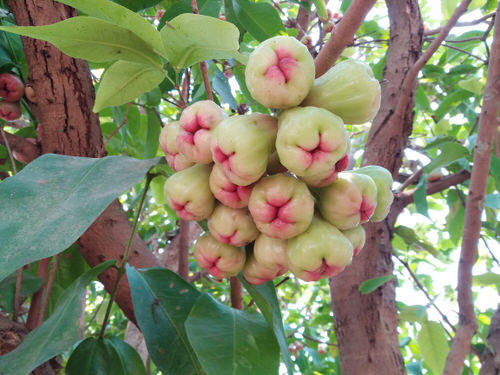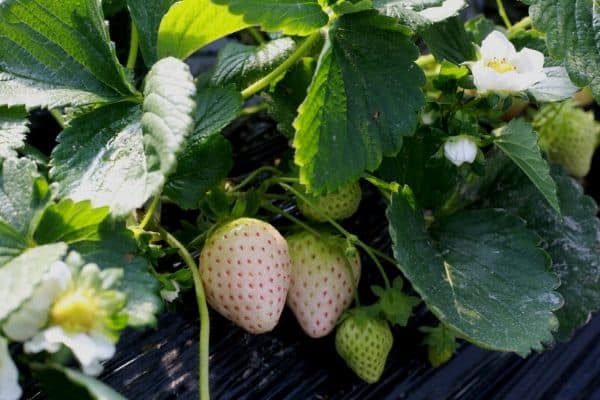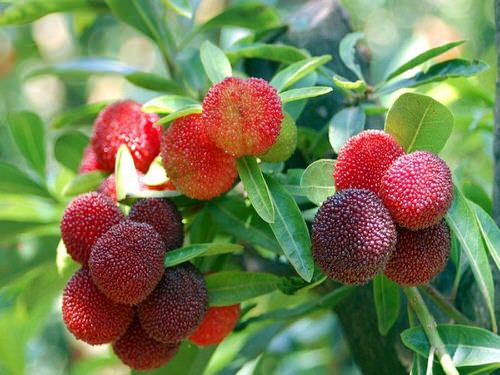Check out this exclusive list of the most Exotic Fruits From Around the World! It will give you an insight on the best ones from different countries!
There are many less heard fruits to explore and you will truly be astonished to know how many of them you have missed. Have a look at the most Exotic Fruits From Around the World!
Check out the most exotic herbs you can grow here
Exotic Fruits From Around the World
1. Aboujahl Watermelon (Hindavane Aboujahl)
Botanical Name: Citrullus Colocynthis
USDA Zones: 3-11
A miniature watermelon similar in appearance to the cucamelon is Aboujahl. These tiny sized-watermelons are one of the most delicious exotic fruits of all time.
Learn growing watermelon in containers here
2. Akebi
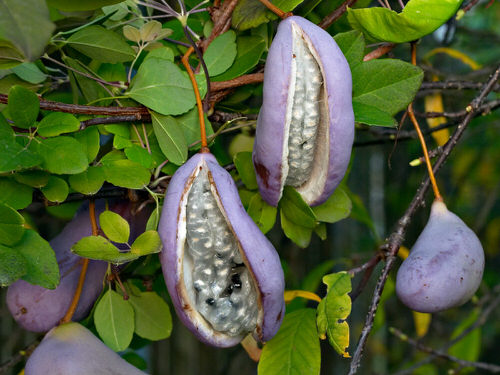
USDA Zones: 4-8
Akebi is also called the Chocolate Vine. The fruit’s pulp is mild in taste with a hint of coconut. It has a very short fruiting time, which makes it quite rare to find.
3. Acai
Botanical Name: Euterpe oleracea
USDA Zones: 10-11
This unusual exotic fruit from South America grows in the rainforests of Brazil. It tastes similar to chocolate and black-purple berries.
4. Achiote
Botanical Name: Bixa orellana
USDA Zones: 10-12
With its nutty and earthy flavor, it tastes exotic and is worth trying. The food coloring derived from its seeds is also used to impart yellow or orange color.
5. Atemoya
Botanical Name: Annona × atemoya
USDA Zones: 9b-11
Another hybrid exotic fruit is a cross between sugar apple and cherimoya. It is very juicy and has a tart taste like Pina colada.
6. Araza
Botanical Name: Eugenia stipitata
USDA Zones: 10-11
Araza is a native to the Amazon jungle in Peru, Brazil, and Ecuador and is one of the most exotic fruits in the world. It has a sour flavor that is often blended into juices, smoothies and used in ice cream.
7. Breadfruit
Botanical Name: Artocarpus altilis
USDA Zones: 10-12
Something fascinating about breadfruit is that it can be eaten in different stages of its growth. When the fruit reaches full maturity, it makes for a good choice for desserts.
8. Buddha’s Hand (Bushukan)
Botanical Name: Citrus medica var. sarcodactylis
USDA Zones: 10-11
This exotic fruit is edible and is mostly used in sweets and in appetizing dinners. Buddha’s Hand smells a bit lemony and sweet similar to lavender.
9. Banana Passion Fruit
Botanical Name: Passiflora tarminiana
USDA Zones: 9-11
It is an oval-shaped fruit that tastes tart and tangy similar to the common purple passion fruit, with slightly lower acidity. It is excellent for making juices.
10. Barrel Cactus (Muppets)
Botanical Name: Ferocactus wislizeni
USDA Zones: 9-11
The barrel cactus looks dangerous and, it can be picked and eaten raw right off the plant and the flesh and seeds can be eaten as it is or even cooked. With a sour flavor that is somewhere between how a kiwi and lemon fruit tastes, Barrel Cactus is bit slimy like okra.
11. Carambola
Botanical Name: Averrhoa carambola
USDA Zones: 10-12
Carambola is native to Southeast Asia and is also called star fruit because it resembles the shape of a star when the fruit is sliced open. This sweet and slightly sour fruit is a good alternative to citrus fruits and also serves well as a garnish.
Learn about growing star fruit here
12. Canistel (Tiesa)
Botanical Name: Pouteria campechiana
USDA Zones: 3-10
Canistel has a chewy consistency with a taste similar to sweet potato, only with an intense flavor. When ripe, its skin becomes entirely yellow.
13. Cashew Apple
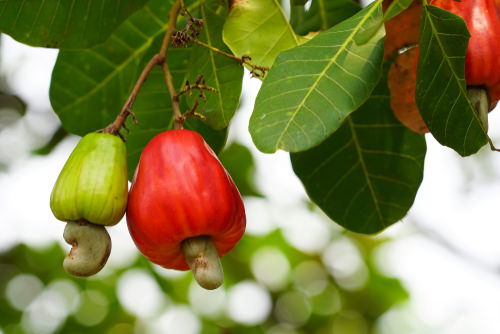
Botanical Name: Anacardium occidentale
USDA Zones: 10-11
Cashew Apple is more like an accessory fruit and is about thrice as large as the true fruit. It is yellow or reddish in color with two shells or walls. The outer shell is thin, elastic, smooth, and olive green in color until it matures after which it turns pale brown.
Check out how to grow a cashew tree here
14. Cupuacu
Botanical Name: Theobroma grandiflorum
USDA Zones: 10-12
This fruit belongs to the cocoa family and is frequently used to make a new kind of chocolate. The exotic flavor is similar to chocolate, with melon, banana, and pineapple undertones.
15. Costa Rica Guaba (Guabero)
Botanical Name: Inga edulis
USDA Zones: 9-11
All you need to do is pop the seed and be careful to only eat the cotton-like pulp and chew till it tastes creamy and delicious. Do not forget to spit out the seeds!
16. Cape Gooseberry (Peruvian groundcherry)
Botanical Name: Physalis peruviana
USDA Zones: 8-11
The yellow-orange fruit grows inside of a thin paper-like husk. Its taste is an appealing mix of tomato and pineapple. It is mostly eaten by dipping in chocolate.
17. Cherimoya (Custard Apple)
Botanical Name: Annona cherimola
USDA Zones: 10-11
This exotic fruit is believed to be one of the most delicious fruits in the world. It has a creamy texture with a combination of tastes of other fruits like strawberry, pineapple, and banana.
18. Cluster Fig (Red River Fig or Gular)
Botanical Name: Ficus racemosa
USDA Zones: 9-12
With an aroma similar to spiced apples, cluster figs develop a very sweet, subtly tangy, neutral flavor. This fruit can be used to make pickles or as a tangy side dish or can be prepared into curries or soups.
19. Cloudberry
Botanical Name: Rubus chamaemorus
USDA Zones: 2-4
Cloudberries are often used to make jams, tarts, juices, or toppings for pancakes and ice creams. This soft and juicy fruit has a tart taste.
20. Crowberry
Botanical Name: Empetrum nigrum
USDA Zones: 3-8
This is not a popular variety of berry but has witnessed a growing interest recently as the raw fruit could be used to make jams, jellies, and wine. With its slightly acidic taste, it tastes much better when cooked.
21. Chocolate Vine Fruit

Botanical Name: Akebia quinata
USDA Zones: 4-8
Chocolate Vine Fruit has a soft pulp that is often eaten raw with a dash of lemon juice or turned into a puree, juice, fruit drink, or ice cream.
22. Calamansi Lime
Botanical Name: Citrofortunella microcarpa
USDA Zones: 9-11
A combination of orange and lime gives a Calamnsi lime a much stronger fragrance and more juice than usual limes.
23. Chayote
Botanical Name: Sechium edule
USDA Zones: 9-12
A native fruit from Mexico that comes from the same family as melons, cucumber, and squash, Chayote can be eaten as it is and is also used in salads and salsas. Ripe Chayote has a mild taste somewhere between a squash and an Armenian cucumber.
Learn how to grow chayote in pots here
24. Cucamelon
Botanical Name: Melothria scabra
USDA Zones: 7-10
This small fruit looks like baby watermelons but only from the outside. Cucamelon is considered to be quite delicious with a taste similar to a combination of a cucumber and a dash of lemon juice.
25. Duku
Botanical Name: Lansium parasiticum
USDA Zones: 11-12
Duku is very sour in taste when it is younger, but as it matures, the fruit develops a sweet-tart flavor similar to grapefruit and pomelo.
26. Durian
Botanical Name: Durio
USDA Zones: 10-12
Inside the thorny skin of the fruit is a soft creamy pulp. It can taste somewhat like caramel and diced garlic poured into whipped cream.
27. Finger Lime
Botanical Name: Citrus australasica
USDA Zone: 10
Australian Finger Lime is increasingly becoming popular as a kind of gourmet fruit and has been also referred to as lime caviar. The little bulbs taste similar to common lime.
28. Feijoa
Botanical Name: Acca sellowiana
USDA Zones: 8-11
Feijoa is a sweet fruit with a hint of mint, pineapple, and apple flavor. It is commonly eaten raw and is best known for its smoothies. The fruit is native to New Zealand but is quite rare and expensive globally.
29. Fuyu Persimmon
Botanical Name: Diospyros kaki ‘Fuyu’
USDA Zones: 8-10
Fuyu Persimmons or ‘Fruit of the Gods’ is known for its historical and mythological significance. This variety is the most popular because of its delicious sweet taste.
30. Falsa (Black Currant)
Botanical Name: Ribes nigrum
USDA Zones: 3-8
Falsa or Black Currant is also called Phalsa and is related to the blueberry. This South and Southeast Asia native fruit is a kind of berry that grows in the summer with its sweet and sour flavor similar to cranberry or black currant.
31. Gac (Baby Jackfruit)
Botanical Name: Momordica cochinchinensis
USDA Zones: 10a-11
This fruit looks like a baby jackfruit, as it is also popularly called, though the similarity in appearance ends at the outer surface. It has a mild, avocado-like taste but is sweeter.
32. Genips (Spanish Lime)
Botanical Name: Melicoccus bijugatus
USDA Zones: 9-12
Genips can be eaten either fresh or used to make jellies, limoncello, and jams. The taste is described as a cross between a lychee and sweet lime with a creamy pulp.
33. Guava

Botanical Name: Psidium guajava
USDA Zones: 9-12
Learn about growing guava in pots here here
34. Hala Fruit
Botanical Name: Pandanus tectorius
USDA Zones: 10-11
Hala Fruit is another exotic fruit that originates from Polynesia. The fruit is relatively large, with a diameter of up to 20 cm and a length of up to 30 cm. It can be eaten raw or cooked in many different ways, making Hala fruit one of the basic staple foods of Micronesia, especially on the atolls.
35. Honeyberry (Fly honeysuckle)
Botanical Name: Lonicera caerulea
USDA Zones: 2-9
Honeyberry is zesty and easily eaten fresh or used in desserts. The taste is a mix between blackberry, blueberry, and raspberry.
36. Imbe
Botanical Name: Garcinia livingstonei
USDA Zones: 10a-11
This is a relative of the African Mangosteen though; it is much lesser-known fruit. Imbe looks similar to an apricot with a pleasant sweet taste.
37. Indian Olive (Elaeocarpus Serratus)
Botanical Name: Olea europaea subsp. cuspidata
USDA Zones: 8-11
With a sour and slightly sweet flavor, the Indian olive is more like an oversized green olive. Apart from the looks, it shares nothing with the popular Mediterranean fruit.
38. Jabuticaba
Botanical Name: Plinia cauliflora
USDA Zones: 9b-11
This unusual fruit grows directly from the tree trunk. In some parts of the world, you can even find Jabuticaba liqueurs and wines. It tastes similar to blueberry mixed with yogurt.
39. Jambula
Botanical Name: Syzygium cumini
USDA Zones: 11-12
With a sweet and sour flavor, Jambula, also known as Malabar Plum, Java Plum, or Black Plum, is often used for medicinal purposes in some African nations.
40. Jackfruit
Botanical Name: Artocarpus heterophyllus
USDA Zones: 10-12
Another tropical fruit that makes it to this list, Jackfruit is commonly grown in Thailand and Vietnam with a flavor that is similar to a mix of mango, pineapple, and banana.
Get the best jackfruit growing tips here
41. Jenipapo
Botanical Name: Genipa americana
USDA Zones: 2-9
With a taste that’s a mix of sweet, bitter, and tart, the fruit is quite unusual. It smells like overripe bananas.
42. Jujube (Chinese Date)
Botanical Name: Ziziphus
USDA Zones: 6-10
This fruit tastes similar to a date and can be eaten fresh or even dried like dates. Jujube is known to contain a flavor element, spinosin that may be effective in aiding natural sleep.
43. Kaffir Lime
Botanical Name: Citrus hystrix
USDA Zones: 9-10
The juice and the fruit are considered to be quite unique in taste with their floral undertone. The taste is a combination of lemon, lime, and mandarin.
44. Karonda
Botanical Name: Carissa carandas
USDA Zone: 11
This fruit tastes sour and bitter with acidic notes and a slightly sweet, herbal taste that is frequently used to make spices and pickles. Karonda is native to Africa, Asia, and Australia and is also called Bengal currant, or Christ’s thorn. This sour green fruit turns red to magenta as it ripens.
45. Kiwano (African cucumber/Horned melon)
Botanical Name: Cucumis metuliferus
USDA Zones: 9-11
Don’t get surprised by the exterior looks of this fruit that you might find a bit odd and while the insides are more confusing. The flavor is a mix of kiwifruit, cucumber and zucchini and can be eaten with a spoon.
46. Korean Melon (Oriental melon)
Botanical Name: Cucumis melo var. makuwa
USDA Zones: 9-11
This little yellow-colored melon, with deep white flesh and stripes on its body, contains small, white, edible seeds. The fruit tastes like a combination of cucumber and honeydew.
47. Kumquat
Botanical Name: Citrus japonica
USDA Zones: 9-10
This bite-size exotic citrus fruit tastes sweet and soft and much like oranges. Though it is native to China but can be found anywhere in Southeast Asia and in North America, and Europe.
48. Langsat
Botanical Name: Lansium domesticum
USDA Zones: 11-12
The orb-shaped fruit looks similar to a small potato with the skin on. It tastes sweet and a bit like grapefruit. It can also be cooked.
49. Longan
Botanical Name: Dimocarpus longan
USDA Zones: 9-11
Longan belongs to the soapberry family-like lychee, but it is not as well known as lychee and is also called the Dragon’s Eye. With a firm, thin shell, the fruit is easy to crack and eat as it is and has a sweet, musky taste.
50. Loquat
Botanical Name: Eriobotrya japonica
USDA Zones: 8b – 11
This exotic fruit looks like an apricot. It tastes sweet, slightly tart, with subtle notes of citrus. Note that the yellow stage is when the fruit tastes the best.
51. Lulo
Botanical Name: Solanum quitoense
USDA Zones: 10-12
This citrus fruit is also called naranjilla in some parts of the world. It has a citrus tangy taste like rhubarb mixed with lime.
52. Lychee
Botanical Name: Litchi chinensis
USDA Zones: 10-11
Lychee has a sweet taste and pleasant aroma to it and some people agree that it tastes like a grape with a subtle hint of rose. However, others claim that its flavor is somewhat like watermelon or pear. The mix of tart and sweet can indicate that the fruit is paired well with other tropical flavors.
Find out the benefits of lychee here
53. Mangosteen
Botanical Name: Garcinia mangostana
USDA Zones: 11-12
This fruit seems to contain a delicious mix of peach, strawberry, pineapple, and lychee and is also difficult to find.
54. Mamey
Botanical Name: Pouteria sapota
USDA Zones: 9-11
A rich source of Vitamin C and B6, minerals, and fiber, Mamey is eaten fresh or used in ice creams, jams, smoothies, and desserts.
55. Medlar
Botanical Name: Mespilus germanica
USDA Zones: 4-9
The fruit flesh tastes like some form of butter that does sound appealing to any fruit lover. It is best to eat medlar when the fruit is extremely soft. You need to pierce the skin and create a hole to suck out both the edible flesh and the seeds that are very squishy and very sweet.
56. Mini Khajoor
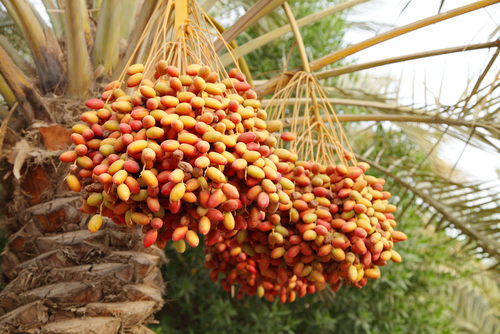
Botanical Name: Phoenix dactylifera
USDA Zones: 7-11
Some people may describe the flavor and texture of a Mini Khajoor as a caramelly raisin. With high sugar content, small dates turn sweetest when they fully ripen.
57. Miracle Fruit
Botanical Name: Synsepalum dulcificum
USDA Zones: 9-11
Miracle fruit has a certain chemical that tends to affect the taste buds in the tongue. Soon after you have tasted the miracle fruit, any other food or fruit you try will taste only sweet, including a lemon! Isn’t that a miracle?
58. Monstera Deliciosa Fruit
Botanical Name: Monstera deliciosa
USDA Zones: 10-12
Another tropical fruit though looks more like a corn ear rather than a fruit. The green scaly skin looks tough and is inedible and the white fruit flesh is eaten fresh and raw that has a similar taste to pineapple.
59. Mountain Grape
Botanical Name: Vitis monticola
USDA Zones: 5-9
Another pretty blueberry relative with a light sweet and sour taste is known to be rich in antioxidants. These lovely clusters of pink, blooms in the shape of bottles are known to flower throughout the year.
60. Mulberries
Botanical Name: Morus alba
USDA Zones: 4-8
This native fruit from China and historically known to be grown for silkworm larvae has a similar look to a stretched-out blackberry. They have a very balanced blend of sweet and tart tastes.
61. Natal Plum
Botanical Name: Carissa macrocarpa
USDA Zones: 9-11
A very delicious fruit but belongs to a very deadly family of Oleander. The fruit is the only safe, edible part of the tree.
62. Nipa Palm fruits
Botanical Name: Nypa fruticans
USDA Zones: 11-12
Nipah comes from the Nipah palm tree and is soft, edible, and juicy with a taste similar to that of a coconut. The fruit is often used in desserts.
63. Noni Fruit (Cheese Fruit)
Botanical Name: Morinda citrifolia
USDA Zone: 10
A native of Asia, Australia, and the Polynesian Islands, the fruit is nearly the size of a mango and is eaten mainly for its many health benefits instead of its taste.
64. Pandanus (screw pine)
Botanical Name: Pandanus
USDA Zones: 10-12
The screw pine tree is a particularly common type of tree in many Pacific coastal regions. The fruit can be a bit tricky to eat, as you need to remove the individual fruit pieces (called keys). The Pandanus contains an oily, nutty-tasting seed that is rich in protein and can be eaten raw or roasted.
65. Platonia (Bacuri)
Botanical Name: Platonia insignis
USDA Zones: 10- 12
This fruit is an excellent combination of sweet and sour which makes it surprisingly tasty. It is often eaten fresh and raw and is also used to make jams and jellies.
66. Passion Fruit
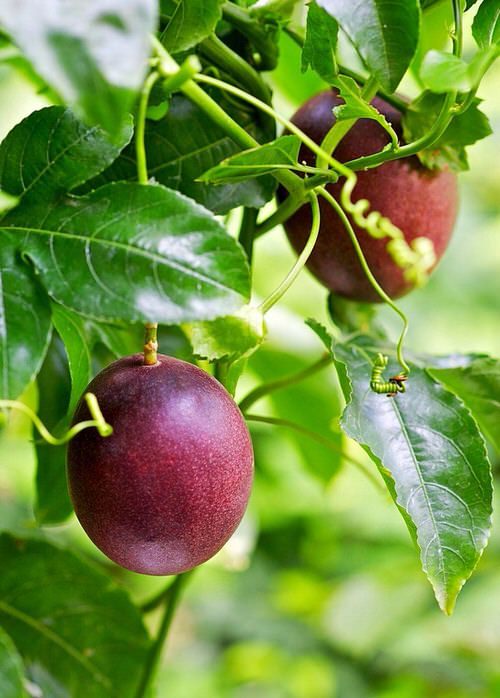
USDA Zones: 10-12
The juicy seeds from this small, yellow or red fruit can be scooped out with a spoon. This native to South America is also used in almost everything from fruit juices to ice creams.
67. Pitaya (Dragon Fruit)
Botanical Name: Selenicereus undatus
USDA Zones: 10-11
Dragon Fruit-flavored drinks and food has become increasingly popular over the past recent years. Its flesh tastes sweet and the seeds have a nutty flavor to them.
68. Pepino Melon
Botanical Name: Solanum muricatum
USDA Zones: 8-11
Pepino melon is not actually a melon despite its name and looks. In fact, the fruit is linked to nightshade and has a mixed taste of cucumber and honeydew. It can be eaten fresh and raw or used in salads.
69. Pomelo
Botanical Name: Citrus maxima
USDA Zones: 9-11
Here is another citrus fruit that comes from Southeast Asia. It tastes similar to a sweet grapefruit and lacks bitterness.
70. Pitanga (Surinam Cherry)
Botanical Name: Eugenia uniflora
USDA Zones: 9b-11
Surinam Cherry is not a cherry at all and the fruit does not even look or taste like a cherry. It can be eaten raw or used to make very good liqueurs, ice creams, juices, sauces, and more.
71. Pink Pearl Apple
Botanical Name: Malus domestica ‘Pink Pearl’
USDA Zones: 5-10
Pink Pearl apple derives its name from the bright rosy pink color of the fruit flesh that could sometimes be streaked or mottled with white. With a sweet-tart to tart flavor, it has a yellow-green, translucent skin that makes it a pretty fruit to even look at.
72. Plantain
Botanical Name: Musa × paradisiaca
USDA Zones: 3-9
A peculiar exotic fruit with looks similar to a banana. Plantain can be eaten fresh, but most people prefer to deep fry it before eating.
73. Pulasan
Botanical Name: Nephelium mutabile
USDA Zones: 10-12
Pulasan seed can be eaten raw and has an almond-like taste and very sweet and juicy flesh. It is native to Malaysia and is rarely found anywhere outside of Southeast Asia.
74. PawPaw Fruit
Botanical Name: Asimina triloba
USDA Zones: 5-8
Another bright, delicious tropical fruit that is a strong combination of banana-mango-citrus. PawPaw fruit has a slight hint of a yeasty, floral aftertaste that may remind you of an unfiltered wheat beer. This fruit is definitely noting like a Papaya as the name could be confusing.
75. Pacay / Guama (Ice Cream Bean)
Botanical Name: Inga feuilleei
USDA Zones: 10-12
The ice cream bean also called pacy and Guama with a cotton pulp with a taste that reminds you of vanilla ice cream. This fruit bears a chewy cotton candy consistency with a juicy finish.
76. Prickly Pear (Cactus Pear)
Botanical Name: Opuntia
USDA Zones: 4-9
Few people realize that this prickly pear cactus is edible too that is sweet in taste somewhat similar to melon but a little bland. The fruit derived its name because of its shape and size similarity to that of a pear.
77. Rollinia fruit
Botanical Name: Rollinia deliciosa
USDA Zones: 10a-11
With marble-sized seeds and white flesh, it tastes like custard apples and cherimoya. Rollinia is also called biribá, wild sugar-apple, and lemon meringue pie fruit.
78. Rambutan
Botanical Name: Nephelium lappaceum
USDA Zones: 10-12
This spiny fruit might look like it would hurt if bitten into but it, in fact, reveals a soft flesh that tastes sweet and can be relished raw.
79. Rose Apples
Botanical Name: Syzygium jambos
USDA Zones: 9-12
The rose apple doesn’t resemble a typical apple, and its shape and size are more like a little pear. The ripened fruits have a much waxier skin compared to apples. Rose apples taste similar to the usual apples and can be consumed in similar ways.
80. Ruby Roman Grapes
Botanical Name: Vitis labrusca ‘Ruby Roman’
USDA Zones: 5-8
If you are looking to buy Ruby Romans, you will have to look for it in the markets of Ishikawa Province in Japan. One of the most expensive fruits in the world, this red-colored, ping-pong ball-sized grape is sweet in taste.
81. Salak
Botanical Name: Salacca zalacca
USDA Zones: 3
This common fruit from Indonesia may not be so common in other parts of the world including the United States. Salak has hints of citrus, pineapple, and honey.
82. Safou
Botanical Name: Dacryodes edulis
USDA Zones: 11-12
Safou is often called a butter fruit because of the texture it offers and a mildly tangy taste when cooked. You can also roast or boil it.
83. Saguaro
Botanical Name: Carnegiea gigantea
USDA Zone: 9
These cactus species are commonly grown in Arizona. The fruits have a sweet taste with a good, nutty flavor.
84. Sweetsop (Sugar Apple)
Botanical Name: Annona squamosa
USDA Zones: 9-11
Sweetsop, a relative of soursop. With no spiky edges of soursop and sweet taste, it is often enjoyed on its own or blended into juice, or made into ice creams.
85. Saskatoon berries
Botanical Name: Amelanchier alnifolia
USDA Zones: 4-7
This Canadian fruit is also called shadbush, wild-plum, saskatoon, juneberry, serviceberry, sarvisberry, shadblow, shadowed, or chuckles pear. It has an earthy taste and a rich marzipan/almond undertone and can be eaten fresh or blended into juice.
86. Salmonberry
Botanical Name: Rubus spectabilis
USDA Zones: 4-8
Salmonberry looks a lot like a raspberry. It has a mild taste with hints of orange and goes well with salads.
87. Santol
Botanical Name: Sandoricum koetjape
USDA Zones: 10a
This unusual-looking fruit has very thick skin and white segments of flesh inside. Most people like to enjoy it by sucking the flesh from the seeds.
88. Sour Plum
Botanical Name: Prunus domestica
USDA Zones: 6-8
Younger sour plums have been traditionally enjoyed in Asia and the Middle East where they are eaten raw or preserved to enjoy the crunchy and tarty taste.
89. Soursop (Guanabana)
Botanical Name: Annona muricata
USDA Zones: 9-11
The fruit flesh tastes like a mix of strawberry and pineapple with some more sour citrus tones to it, making it a good choice for juices and smoothies.
90. Star Apple
Botanical Name: Chrysophyllum cainito
USDA Zones: 10-12
You can scoop out the aromatic pulp that has a tropical sweet taste which is a combination of lychee, apple, and persimmon.
91. Strawberry Tree
Botanical Name: Arbutus unedo
USDA Zones: 4-11
The strawberry tree is the name of a red-colored sweet berry that can be eaten as it is when ripe. The flavor is often compared with fig and it is not a fruit that could easily be found.
92. Tamarind
Botanical Name: Tamarindus indica
USDA Zones: 10-12
It is a sweet and sour fruit with a tangy flavor, native to Africa and looks similar to a giant peanut. Tamarind is known to have made its way into different cuisines in several parts of the world, especially in India.
93. Tamarillo
Botanical Name: Solanum betaceum
USDA Zones: 10a or above
It looks like it came out of a drawing book filled with different shades of color. This egg-shaped yellow-red-orange-colored fruit tastes slightly sour and sweet.
94. Water Apple
Botanical Name: Syzygium
USDA Zones: 10b
The tropical fruit is not an apple at all despite its name having a mild flavor. The texture inside is quite watermelon-like.
95. White Jamun (Love Apple)
Botanical Name: Syzygium samarangense
USDA Zones: 8-12
This exotic fruit is one of the most sought-after, with a tangy and sweet taste. It may be exotic to other parts of the world but quite common in India.
96. White strawberries (Pineberry)
Botanical Name: Fragaria x ananassa ‘Pineberry’
USDA Zones: 4-10
This rare breed of strawberries tastes sweeter than the red ones. Some people describe the taste as similar to pineapple that dissolves into a sweet, candy-like flavor.
97. Wood Apple, Bael, Stone Apple
Botanical Name: Limonia acidissima
USDA Zones: 9b-11
This apple has funky, sour pulp that is more delicious with a touch of sugar and is often used in desserts with warm spices. In Sri Lanka, many people add sugar and coconut milk to the pulp to make a drink of the juice of wood apple
98. Yangmei (Chinese bayberry)
Botanical Name: Morella rubra
USDA Zone: 10
Yangmei is very common in China and is often eaten raw and used in making cocktails. The fruit is small, only a bit bigger than a cherry, and has a comparative taste and a texture similar to a strawberry.

